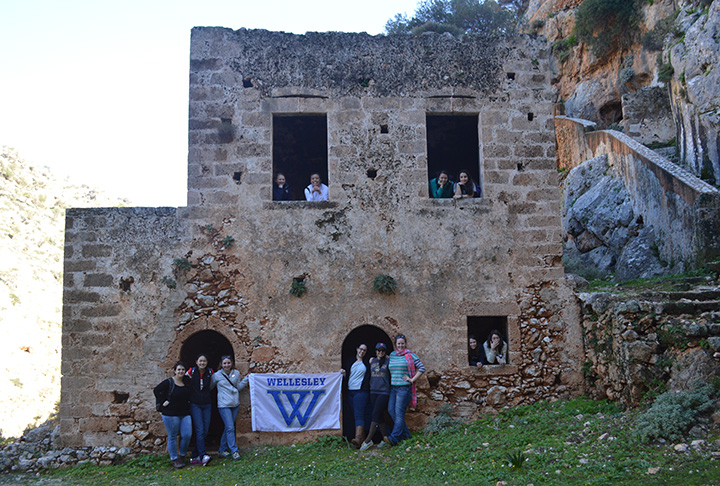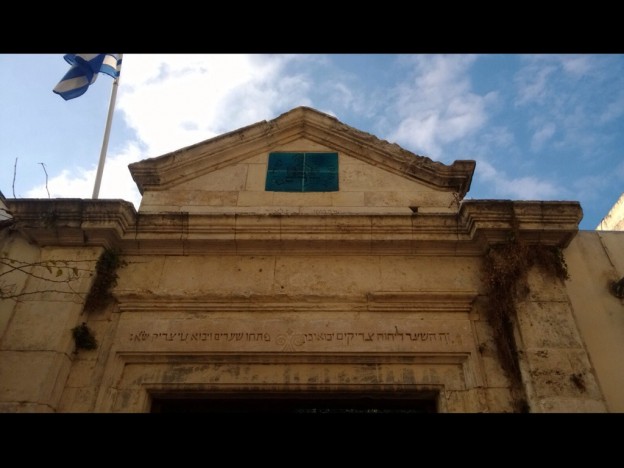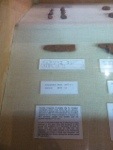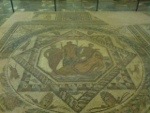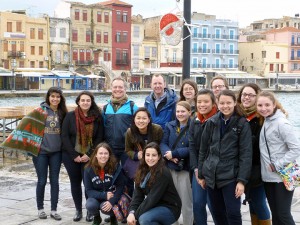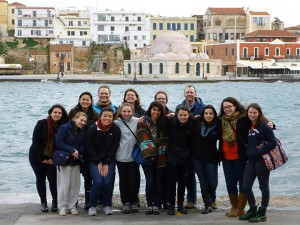This week we visited three gravesites: the British commonwealth Cemetery at Suda Bay, the German cemetery at Maleme, and a Late Minoan tholos tomb nearby. It was a great opportunity to see what these burial sites showed about Crete, and Greece, at the time of their construction. As resting places for the dead, their design would have been chosen with care. The sites speak about the dead, but also about Crete’s relationship with the world beyond the island.
Suda Bay is a prominent waterside spot chosen in 1944 for the soldiers from Commonwealth countries who died on Crete. Most of them were killed defending the island from Nazi attack in May 1941. The effort failed, but it may have contributed to a later important German loss in the Soviet Union. The site is manicured, organized and prominent. Each fallen soldier is given an individual headstone customized by country, rank, and religion. Each grave is easily accessible, and the many visitors from Commonwealth countries in the guestbook have clearly spent time finding specific young men. Freshly smarting from German occupation, the designers of the cemetery created a public spot to honor Crete’s heroes – a celebration of victory.
 But what about the bodies of Germans killed in the battle? Kept in isolated graves and eventually moved to a monastery, it was not until 1974 that they were provided with a final resting place. This secluded area is very different from Suda Bay. Here, the landscaped graves blend together, masquerading as an olive grove. Soldiers share headstones and graves are difficult to access. To me, the area suggested healing, unity and a smoothing over of the past. Likely it blends in both to avoid offending residents, but also to convey that the war is a thing of the past. Dedicated just months after the fall of Greece’s military junta in 1974, the site suggests a willingness of the new government to be welcomed into modern Europe.
But what about the bodies of Germans killed in the battle? Kept in isolated graves and eventually moved to a monastery, it was not until 1974 that they were provided with a final resting place. This secluded area is very different from Suda Bay. Here, the landscaped graves blend together, masquerading as an olive grove. Soldiers share headstones and graves are difficult to access. To me, the area suggested healing, unity and a smoothing over of the past. Likely it blends in both to avoid offending residents, but also to convey that the war is a thing of the past. Dedicated just months after the fall of Greece’s military junta in 1974, the site suggests a willingness of the new government to be welcomed into modern Europe.
Just a little past the cemetery is a stone “tholos” tomb from the Late Minoan period. Built into the hillside, slightly square and using a long entryway, the site has Mycenaean (mainland) characteristics. Even so, it is the product of a transitional period on Crete with the arrival of Mycenaean influence. I had to wonder why the builders chose this specific design, and whether it was an effort to deal with these changes on the little island. Just like the designers of the cemeteries nearby, their choices reflect Crete’s constantly changing position, as different groups gained power. In what we have seen so far, maintaining an identity in the midst of these shifts is a key goal of Crete’s rich array of culture.


